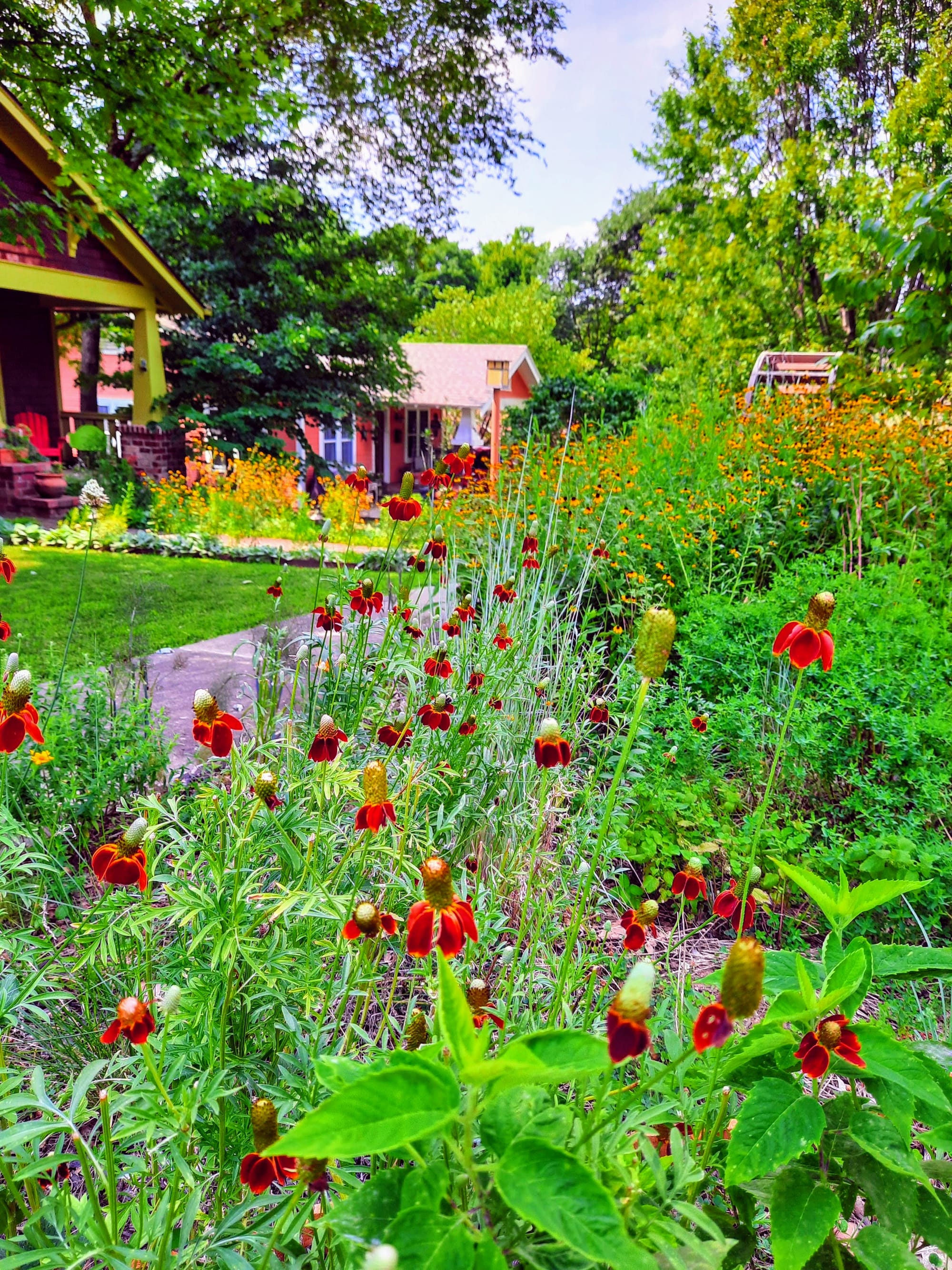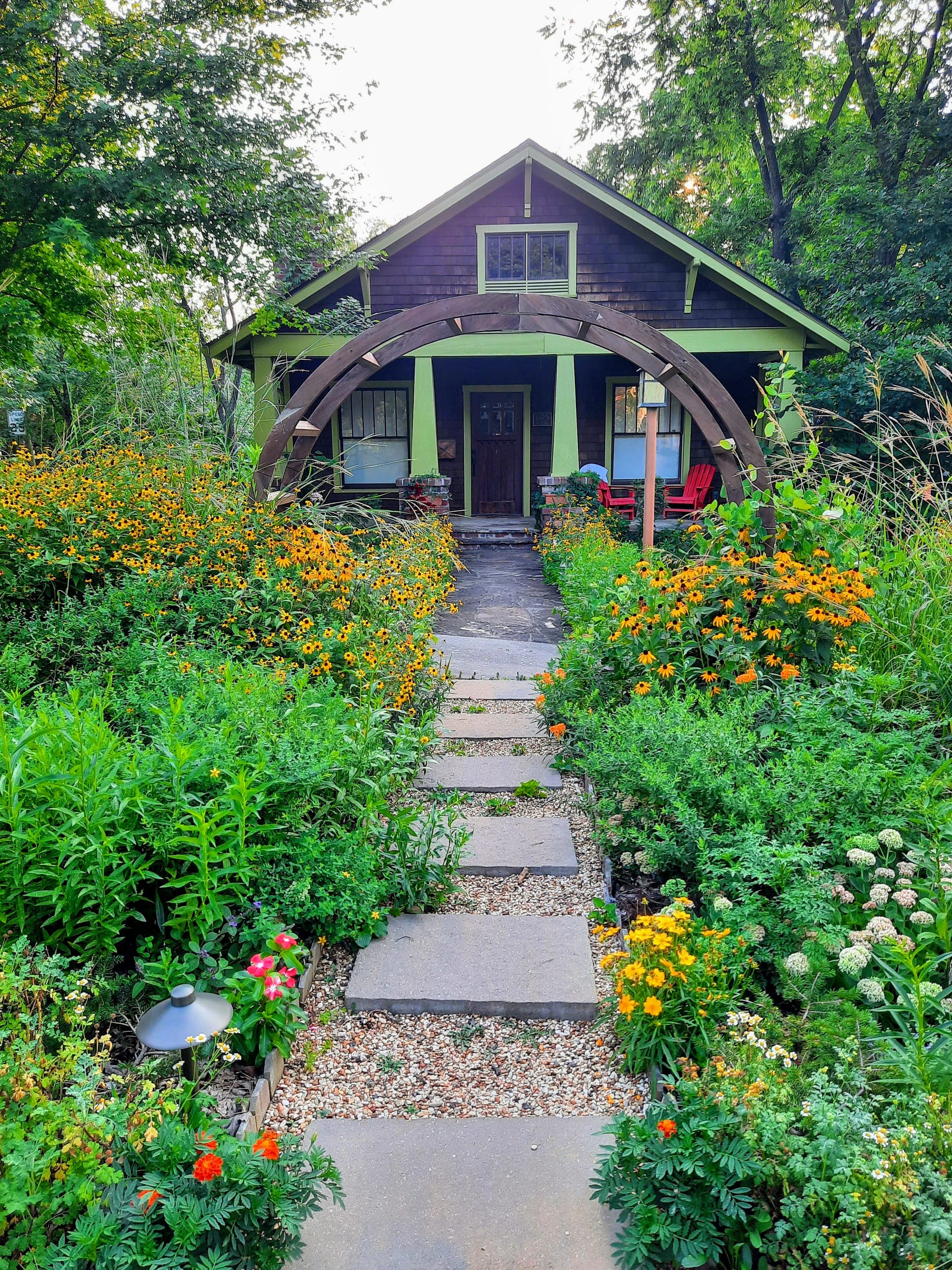Whether you’ve been living in your home for years or are excited to put your stamp on your new digs, creating a new garden or improving the one you’ve got can be one of the most satisfying parts of homeownership, and late summer/early fall is a great time to do it.
Unfortunately, for most, gardening feels more like a chore than a pleasure.
Check out these 5 tips to turn your yearly mulching, and endless watering, mowing, and weeding to a home improvement hobby that is not only joyful, but also easy on the wallet.
- Assess the situation
We’ve all been there. It’s a beautiful day, so you decide to head to your local nursery, only to be taken in by the most gorgeous blooms you’ve ever seen. You must have these blooms in your home. So you buy the plant, take it home, and eagerly put your new plant in the ground, and after a few weeks, it’s not only stopped blooming- it’s dead- only to confirm your deepest suspicions- you have a black thumb.
I do not believe anyone has a black thumb. But I do think most aspiring gardeners often fail to engage in 1 crucial first step: assessing the situation. Namely, there are 2 questions you need to ask: how much sun does this area get? How much water does this area hold? Once you accept the reality of what you’ve actually got- not what you wish you had- then you can buy plants- that are suited to your site (and not just pretty at the nursery). Remember: Right plant, right place. No more wasting money on plants that were never meant to grow there anyway.
- Go native
Speaking of where plants are meant to grow, opt for plants that are native to our region.
I get it- there’s something magical about lavender fields, climbing roses and wisteria, and coniferous forests. But this ain’t that! We’re not in Provence. We’re not in the hills of China, or the Canadian Rockies. We’re in the Ozarks. And that’s ok. No, that’s more than ok. NW Arkansas has so much beauty that is uniquely adapted to not just survive our icy winters, wild temperature swings, and endless hot summer droughts, but to thrive in such conditions, year after year.
Don’t assume you’ll have to settle for a mess of weeds if you go native. In a sunny bed, you can create a gorgeous stylized prairie of little bluestem, purple coneflower, black eyed susans, goldenrod, and asters, while in a shady area, you can create a lush blanket of wild violets, columbine, bluebells, ferns, and sedges.
These plants can be difficult to find in local nurseries, but check out the native plant section of White River Nursery or go online to Ozark Soul or Prairie Moon Nursery. You’ll be amazed at the resilience, vigor, and beauty of what naturally grows in our area. And you’ll be proud of your success.
- Plant densely
By far the biggest problem I see in most landscapes is plant spacing. There’s just so much of it! The result is often an uninspiring display of goofy shrubs social distancing from each other in a vast sea of mulch.
This is not how nature works. Plants naturally thrive in close proximity, as roots intermingle with each other and sturdier stems hold up wisps and delicate blossoms. What’s more, there is rarely wood mulch in nature. And yet, nature keeps going, filling in all the empty spaces of bare earth.
So take a tip from Mother Nature, and ditch the yearly mulch bags. Aside from mulching upon initial installation so you can see which plants you put in, you do not have to mulch ever again in the home garden! If you are working with mostly herbaceous perennial native plants, a good rule of thumb is to install 1 plant per sf, so that the plants themselves serve as “green mulch” to fill up the space, outcompete the weeds, and hold moisture. To save on cost, always get the smallest container- rest assured it will grow to its full potential by year 2 or 3.
- Consider annual seeds
Long term, having a mostly perennial garden will be easiest on the workload and the wallet. But when your garden is young and the perennial plants have not filled out the space yet, consider seeding with both native and non-native annual flowers. This is a very cost effective way to instantly add color. And you’ll be rewarded with lots of bees and butterflies in search of food. Seeds can be bought online or at big box home improvement stores. Some good options for Spring color are non-native bachelor buttons, alyssum, and crimson clover. Zinnias, marigolds, and cosmos do really well from summer until frost, as do native annuals like partridge pea and lemon bee balm. Just scatter the Spring bloomers in March-April, and the summer bloomers in May, and let nature do the rest.
- Low Maintenance- Not No Maintenance
By now you can see that gardening is not as hard as it seems. If you know your site, choose native perennials suited for that site, plant densely with the smallest containers, and fill in the gaps with seeds of charismatic annual flowers, you’ll have a gorgeous garden that requires no yearly wood mulch, no fertilizer, and no soil amendment.
That doesn’t mean you will never have to water or weed or cut. You’ll always want to do a little sprucing, especially in the beginning. Like puppies and people, baby gardens need a bit more attention their first year. You’ll have to water heavily upon installation, weed every few weeks, and water if it hasn’t rained for more than a week in the dog days of summer. Many gardens benefit from a yearly cut down in the winter, especially if you leave the spent foliage in place to serve as a natural mulch. And you’ll likely want to weed every spring to give your garden a clean growing slate for the season.
But in time, you’ll find yourself doing less watering and weeding and more admiring- of the lush and lively landscape you’ve created- in your home.
Claudia Vilato is a REALTOR at Collier & Associates and owner and operator of WILD, a landscape design company that educates the diy gardener on how to create low maintenance, cost effective, pollinator gardens in NW Arkansas. You can reach her at 305-781-0062 or cvclovil@gmail.com



